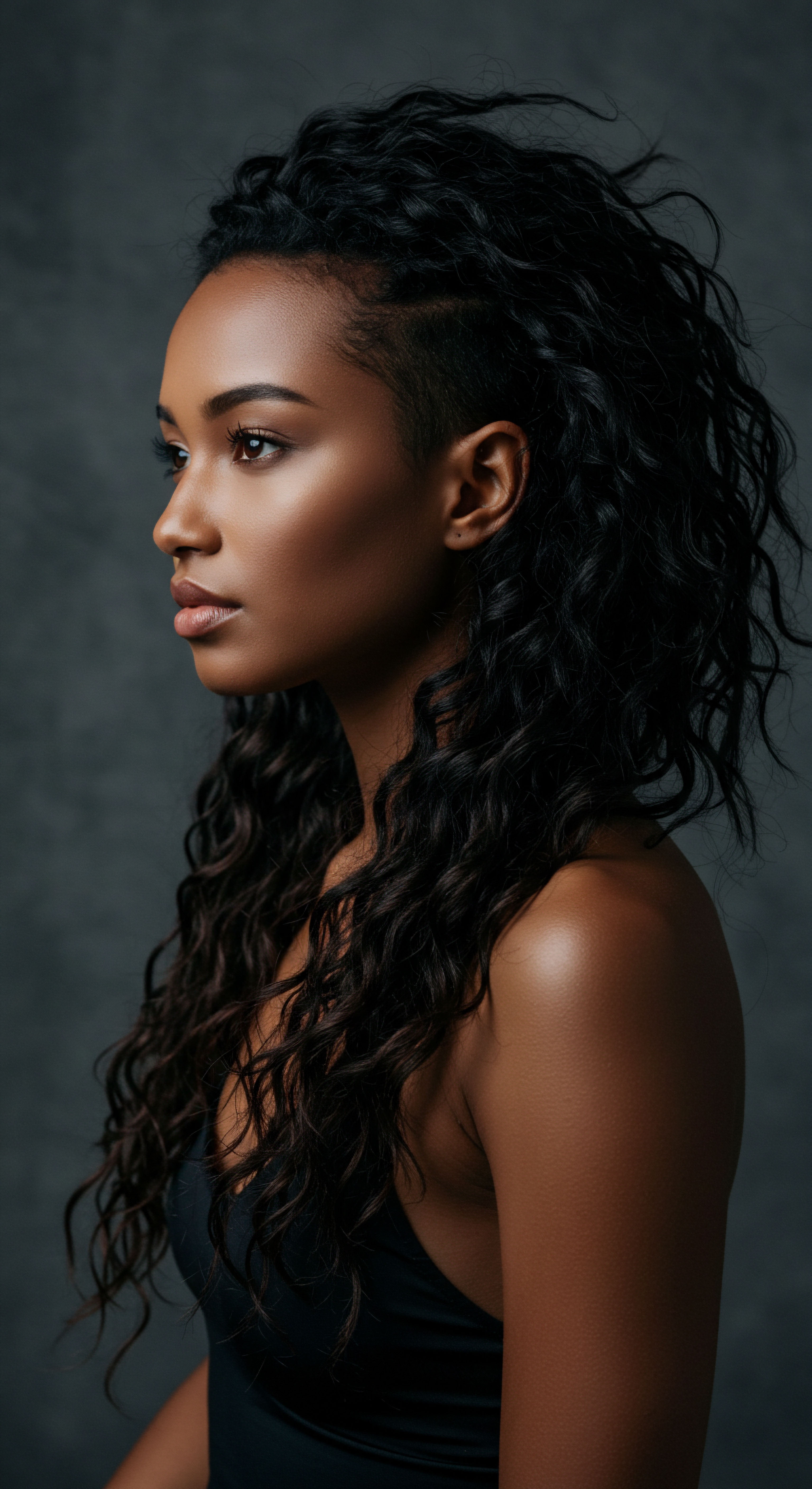
Fundamentals
The world of hair and scalp health often whispers of complex scientific terms, yet at its heart, understanding begins with gentle curiosity. When we speak of Cutibacterium Acnes, often abbreviated to C. acnes, we are stepping into the microscopic, yet profoundly influential, realm of our scalp’s living landscape.
This bacterium is a natural resident, a microscopic companion dwelling within the hair follicles and sebaceous glands across our skin, particularly abundant in areas rich with sebum, such as the face, back, and, indeed, the scalp. Its fundamental meaning rests in its widespread presence and its capacity to exist in a delicate balance with other microorganisms that call our skin home.
Imagine the scalp not merely as a surface from which hair springs, but as a thriving, intricate garden. Within this garden, the hair follicles act as tiny, sheltered pockets, and it is here that C. acnes primarily resides. This bacterium, previously known as Propionibacterium acnes, earned its earlier name from its ability to produce propionic acid, a short-chain fatty acid.
This metabolic byproduct contributes to the naturally acidic pH of our skin, a protective layer that helps deter the proliferation of less desirable microbes. So, in its most basic interpretation, C. acnes serves as a natural guardian, playing a part in maintaining the skin’s inherent defenses.
For those with textured hair, particularly within Black and mixed-race hair traditions, this initial understanding of C. acnes takes on a unique significance. The very structure of textured hair follicles, often curved or coiled, can influence the microenvironment within. These unique follicular shapes, combined with traditional hair care practices that might involve richer products or less frequent washing, can create conditions that either support or disrupt the natural equilibrium of the scalp microbiome.
The description of C. acnes, therefore, extends beyond a simple biological designation; it becomes a lens through which we can better comprehend the subtle interplay between our inherent biology and the beautiful, diverse ways we nurture our strands.
Understanding Cutibacterium acnes begins with recognizing it as a common, often beneficial, resident of our scalp’s unique microbial garden.
The clarification of its role as a commensal organism—a companion that lives in harmony with us—is paramount. It exists in an environment characterized by sebaceous glands, which secrete sebum, a complex blend of lipids. C. acnes is well-adapted to this lipid-rich, often oxygen-limited setting, breaking down triglycerides in sebum into free fatty acids.
This process is a normal part of skin physiology. Its presence, far from being a simple problem, is a key component of a healthy skin barrier. The elucidation of its function as a contributor to skin acidity highlights its foundational importance.

The Scalp’s Living Veil
Our scalp, a landscape of hair and skin, maintains a delicate balance, a living veil of microorganisms working in concert. C. acnes, as a prominent member of this community, helps shape this environment.
It is not an intruder, but rather an integral part of the protective system that shields our scalp from external elements. This protective function is a vital aspect of its overall meaning.
- Microbial Harmony ❉ C. acnes participates in a complex community of bacteria, fungi, and viruses on the scalp, contributing to the overall balance.
- Sebum Metabolism ❉ This bacterium thrives on the lipids within sebum, breaking them down into fatty acids that influence the scalp’s pH.
- Acidic Mantle Support ❉ The propionic acid produced by C. acnes helps maintain the skin’s acidic mantle, a natural defense against potential pathogens.
To truly appreciate C. acnes, we must view it as more than just a scientific term. It is a testament to the intricate biological systems that underpin our well-being, even in the unseen corners of our scalp. For textured hair, where unique care practices and inherent curl patterns shape the follicular environment, this basic understanding forms a foundational stone for deeper explorations into scalp wellness.

Intermediate
Moving beyond the initial description, an intermediate understanding of Cutibacterium acnes invites us to consider its more dynamic and contextual meanings within the landscape of scalp health, particularly for textured hair. While often a benign resident, C. acnes possesses the capacity to shift its behavior under certain conditions, transitioning from a helpful commensal to an opportunistic player in scalp concerns. This delineation is vital for those seeking to truly comprehend their hair and scalp needs.
The scalp, a unique ecosystem due to its dense population of hair follicles and sebaceous glands, provides a lipid-rich, often hypoxic environment where C. acnes flourishes. This setting, while optimal for its usual existence, can also become a breeding ground for imbalance if certain factors come into play. When there is an overproduction of sebum, or if hair follicles become obstructed, the anaerobic conditions favored by C.
acnes can intensify, leading to an increased proliferation of the bacterium. This surge in numbers, especially of certain phylotypes (strains) of C. acnes, can trigger or exacerbate inflammatory responses within the hair follicle, a condition often recognized as folliculitis.
For individuals with textured hair, the architecture of their hair follicles, characterized by their curved or coiled shape, can inadvertently contribute to this delicate balance. These unique follicular structures may sometimes make the efficient egress of sebum and cellular debris more challenging, potentially creating microenvironments where C. acnes can multiply beyond its beneficial levels. Furthermore, the reliance on certain protective styles, while offering many benefits like length retention and reduced manipulation, can sometimes limit direct access to the scalp for thorough cleansing and moisture application.
This limited access can lead to product buildup or an altered scalp environment, inadvertently influencing the microbial community and the activity of C. acnes.
Cutibacterium acnes, though usually a benign resident, can contribute to scalp concerns when the delicate balance of the follicular environment is disturbed.
The interpretation of C. acnes in this intermediate context, therefore, extends to its role in common scalp issues that disproportionately affect textured hair. Conditions such as mild follicular inflammation or persistent itching can often have C.
acnes as a contributing factor, not necessarily as the sole cause, but as an active participant in a broader dysbiosis of the scalp microbiome. Understanding this allows for a more nuanced approach to care, moving beyond simple remedies to a deeper appreciation of the scalp’s microbial equilibrium.
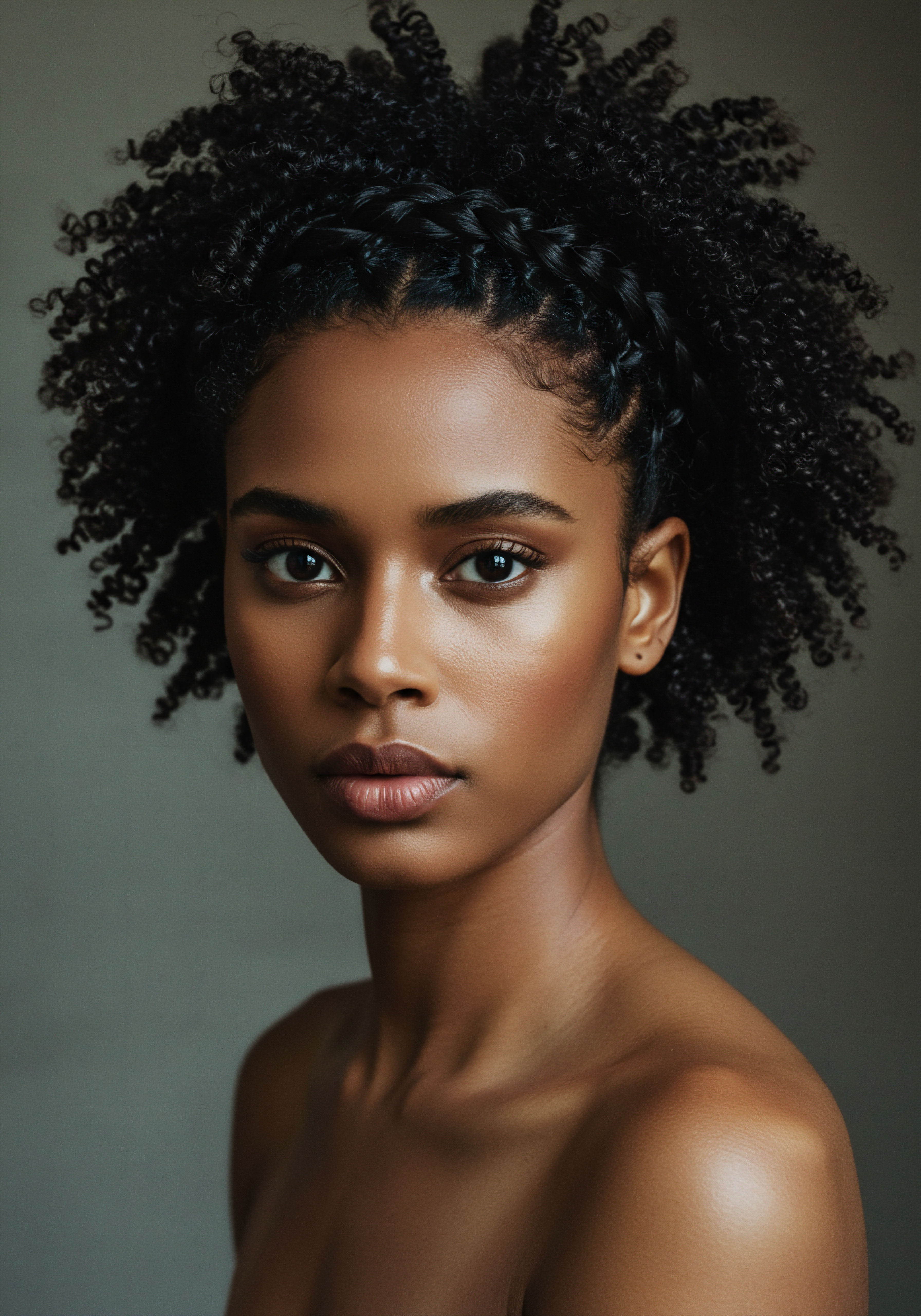
Follicular Dynamics and Microbial Shifts
The dynamic interplay between sebum, follicular structure, and microbial inhabitants shapes scalp health. When this interplay falters, C. acnes can become part of the challenge rather than the solution.
| Condition Folliculitis |
| C. Acnes Involvement Overgrowth or specific strains of C. acnes can induce inflammation within hair follicles. |
| Relevance to Textured Hair Curved follicles may be more prone to occlusion, fostering an environment for C. acnes overgrowth. |
| Condition Dandruff/Seborrheic Dermatitis |
| C. Acnes Involvement While often linked to Malassezia yeast, C. acnes contributes to the scalp's lipid environment, influencing the overall microbial balance. |
| Relevance to Textured Hair Product layering and infrequent washing can alter the scalp's lipid profile, affecting microbial interactions. |
| Condition Scalp Irritation & Itching |
| C. Acnes Involvement Inflammatory responses triggered by C. acnes overgrowth can lead to discomfort. |
| Relevance to Textured Hair Tension from styles and product residue can exacerbate irritation, creating a cycle with microbial imbalances. |
| Condition Understanding these connections helps tailor effective scalp care for textured hair. |
The presence of C. acnes in higher quantities or specific strains (phylotypes) can lead to an upregulation of inflammatory pathways. This reaction by the body’s immune system, meant to protect, can sometimes become chronic, contributing to persistent scalp issues.
The implications for textured hair care are significant. It underscores the importance of not only cleansing practices that reach the scalp effectively but also selecting products that respect the delicate microbial ecosystem, rather than stripping it or creating an overly occlusive environment.
An educated approach to managing C. acnes, then, is not about eradication, which is impossible and undesirable given its beneficial roles, but about maintaining a healthy equilibrium. This involves recognizing the signs of imbalance and adjusting care routines to support the scalp’s natural defenses, allowing the beneficial aspects of this bacterium to continue their quiet work. The significance of this balance becomes clearer when we consider the potential for chronic inflammation to impact hair follicle health over time, particularly in hair types that are already prone to tension or unique follicular challenges.
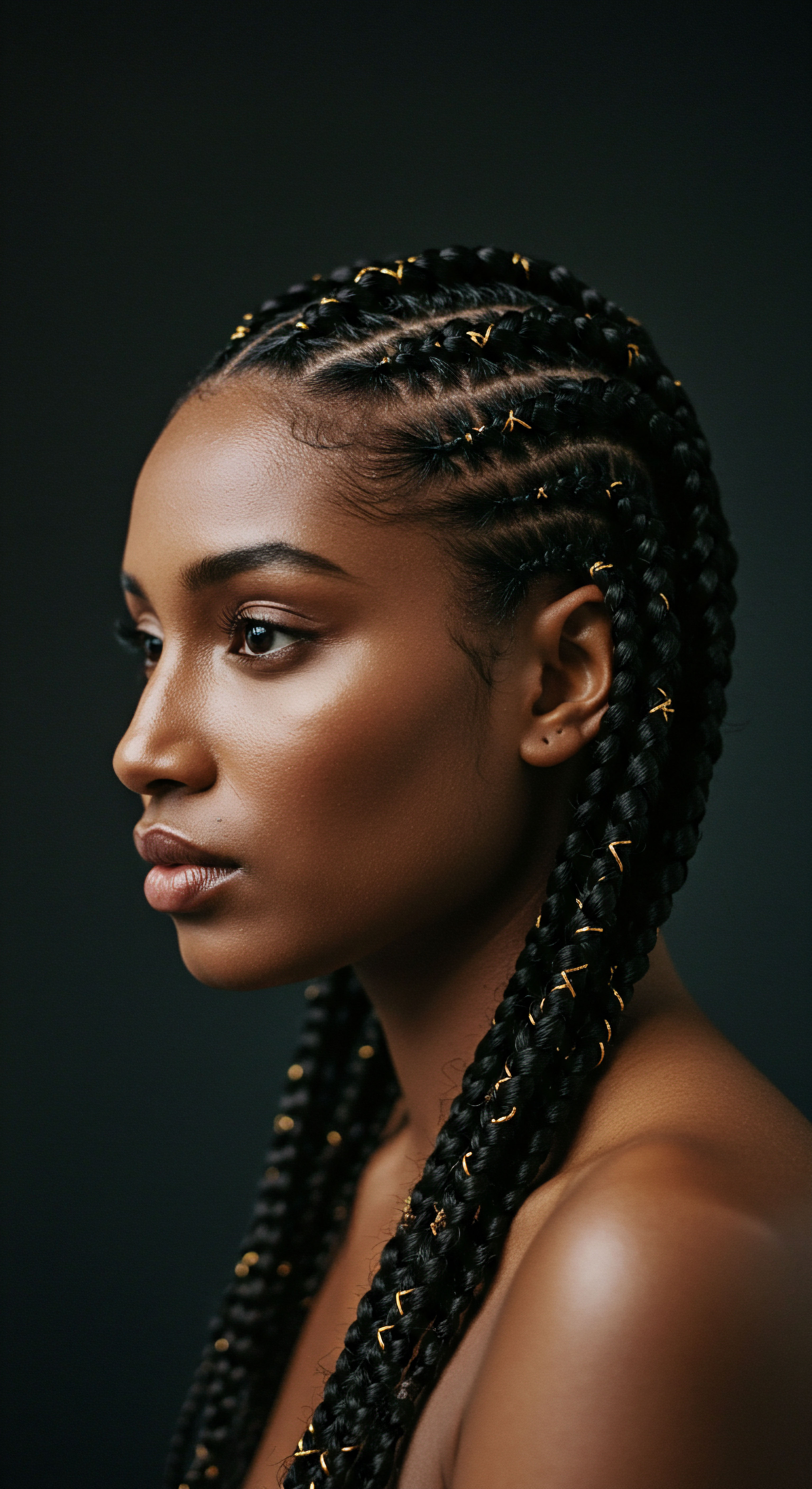
Advanced

Exact Meaning of Cutibacterium Acnes
The advanced comprehension of Cutibacterium acnes transcends a mere biological classification; it represents a profound exploration into its complex identity as a cornerstone of the human pilosebaceous unit, capable of both sustaining cutaneous health and contributing to dermatological pathology. Its full significance lies in its dynamic interaction with host physiology, genetic predispositions, and the intricate microenvironment of the hair follicle, particularly pronounced in the unique context of textured hair. C. acnes, a Gram-positive, anaerobic to aerotolerant rod-shaped bacterium, is the most abundant microbial inhabitant of sebum-rich skin sites.
Its biological definition is deeply intertwined with its metabolic capabilities, primarily its capacity to hydrolyze triglycerides in sebum into free fatty acids (FFAs) and glycerol via secreted lipases. This enzymatic activity is not merely a digestive process; it fundamentally shapes the follicular milieu by lowering pH, which influences the growth of other microbial species and the integrity of the skin barrier.
Beyond this foundational metabolic role, the sophisticated understanding of C. acnes recognizes its remarkable intraspecific subtype diversity, meaning that different strains, or phylotypes, possess varying immunological and pathogenic potentials. For instance, certain phylotypes, such as IA1, have been strongly associated with pro-inflammatory responses and the activation of the Th17 immune pathway, a key driver in inflammatory skin conditions. Conversely, other phylotypes may exhibit protective functions, producing antimicrobial peptides or anti-inflammatory metabolites that contribute to skin homeostasis.
This duality means that the presence of C. acnes alone does not dictate pathology; rather, it is the qualitative composition of its population, coupled with host susceptibility and environmental factors, that determines its ultimate impact on scalp health.
The elucidation of C. acnes‘s full implications extends to its ability to form biofilms within the hair follicle. These organized microbial communities provide a protective niche, enhancing bacterial survival and potentially contributing to chronic inflammation and antibiotic resistance. The environment within the hair follicle, particularly in textured hair, presents specific challenges that can influence biofilm formation.
The coiled nature of these follicles can create deeper, more oxygen-deprived spaces, which are ideal for anaerobic growth and biofilm maturation. This architectural distinction, combined with practices such as occlusive styling or infrequent cleansing that might limit oxygen exposure and promote product accumulation, can inadvertently foster conditions where pathogenic C. acnes phylotypes can thrive and contribute to persistent inflammatory states.
The true complexity of Cutibacterium acnes lies in its diverse strains and their ability to shift from beneficial partners to inflammatory contributors, particularly within the nuanced environment of textured hair follicles.
An expert-level delineation of C. acnes necessitates acknowledging its role in the broader context of scalp microbiome dysbiosis, where an imbalance among microbial communities can precipitate or exacerbate conditions. While C. acnes is often a significant component, it rarely acts in isolation.
Its interactions with other common scalp residents, such as Malassezia species and Staphylococcus epidermidis, create a complex web of microbial crosstalk that can either promote health or drive disease. This advanced perspective moves beyond a simplistic “good versus bad” dichotomy, embracing the nuanced reality of microbial ecology on the scalp.
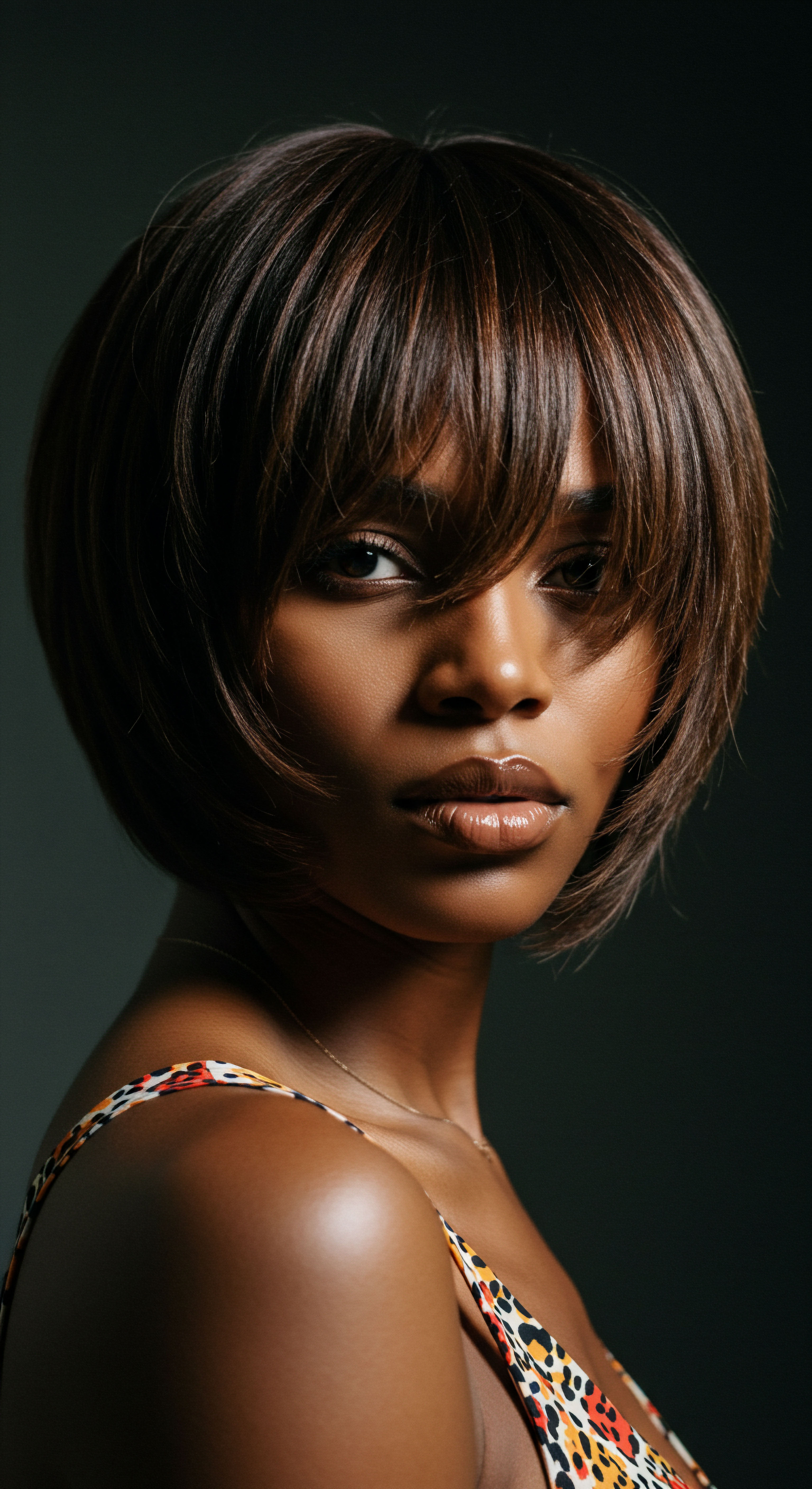
Cutibacterium Acnes and the Textured Hair Experience ❉ A Deeper Look
For those who nurture textured hair, the story of C. acnes takes on particularly resonant tones. The very structure of these hair strands, from the tight coils to the gentle waves, influences the follicular environment in ways often overlooked in broader dermatological discussions. The curved path of a textured hair follicle can create micro-niches where sebum and shed skin cells might accumulate more readily, potentially altering oxygen levels and nutrient availability for resident microbes.
This unique follicular anatomy means that the balance of C. acnes and its interaction with the host immune system can be distinct.
Consider the practices deeply rooted in textured hair care—the art of protective styling, the use of rich emollients, and often, less frequent washing cycles to preserve moisture. While these practices are foundational for maintaining hair health and integrity, they can also inadvertently influence the scalp microbiome. Long-term protective styles, for instance, might create an environment that is less exposed to air, potentially promoting the growth of anaerobic bacteria like C.
acnes. Heavy product application, while moisturizing the hair, could lead to residue on the scalp, which, if not adequately cleansed, might serve as a substrate for microbial overgrowth.
A less commonly discussed, yet significant, data point emerges from research into scalp conditions disproportionately affecting individuals of African descent. While Cutibacterium acnes is not typically cited as the primary cause of severe scarring alopecias like Central Centrifugal Cicatricial Alopecia (CCCA), its presence and activity within a compromised follicular environment warrant attention. Studies investigating the scalp microbiome in CCCA have revealed shifts in microbial composition, though the exact role of C. acnes in its pathogenesis remains an active area of inquiry.
For example, while some research points to a higher relative abundance of Corynebacterium species in CCCA patients compared to controls, the overall dysbiosis of the scalp microbiome, including the potential for altered C. acnes phylotypes or exacerbated inflammatory responses in the presence of this bacterium, forms a crucial part of the puzzle. This suggests that while C. acnes may not initiate the condition, its inflammatory potential within a susceptible follicular environment, perhaps exacerbated by specific hair care practices that create an anaerobic, lipid-rich milieu, could contribute to the chronic inflammation seen in such conditions.
This perspective offers a compelling reason to consider the scalp microbiome, including C. acnes, with informed precision when addressing hair health in textured hair communities.
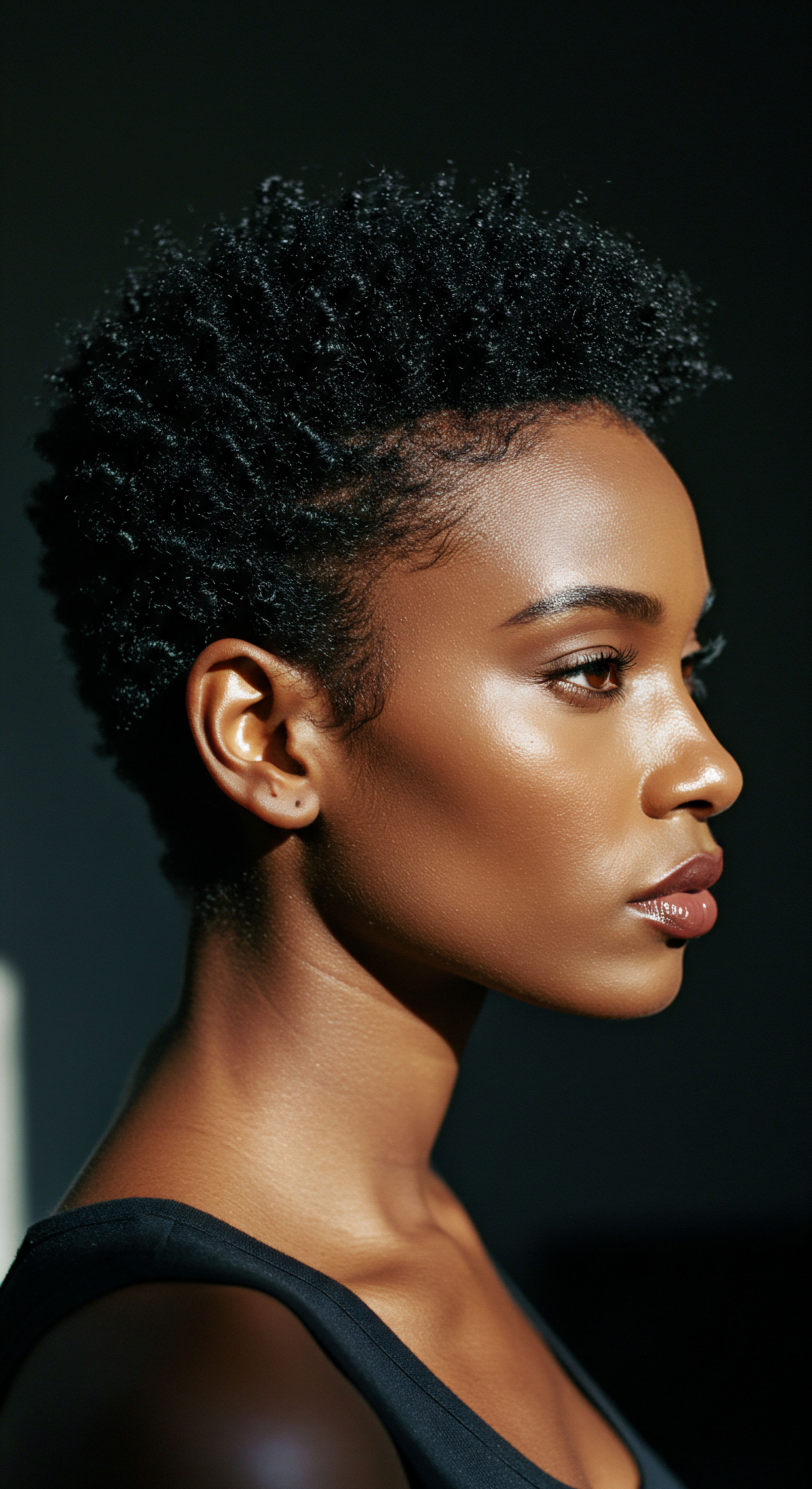
The Interplay of Biology, Culture, and Care
The interplay of biological predisposition, cultural hair practices, and daily care routines creates a multifaceted understanding of C. acnes’s impact on textured hair. This bacterium’s meaning shifts from a singular biological entity to a participant in a complex dialogue between our bodies and our traditions.
- Follicular Morphology ❉ The unique shape of textured hair follicles can influence sebum flow and oxygen access, potentially creating microenvironments conducive to C. acnes proliferation.
- Hair Care Rituals ❉ Practices like extensive use of occlusive products or prolonged protective styles can alter the scalp’s microclimate, impacting microbial balance.
- Inflammatory Response ❉ Genetic factors or specific C. acnes phylotypes can trigger heightened inflammatory reactions, contributing to scalp discomfort or more severe conditions.
From a corporate and expert perspective, this advanced understanding provides a blueprint for innovation. It moves product development beyond superficial solutions to creating formulations that genuinely support scalp microbiome equilibrium. This means considering ingredients that not only cleanse but also balance the scalp’s pH, provide prebiotics or postbiotics to nourish beneficial microbes, and offer anti-inflammatory benefits that respect the delicate follicular ecosystem. The long-term success of hair care strategies for textured hair hinges upon recognizing this nuanced relationship with C.
acnes, prioritizing holistic scalp health as the foundation for vibrant, resilient strands. This deep analysis allows for the creation of targeted interventions that truly address the unique needs and experiences within the textured hair community.
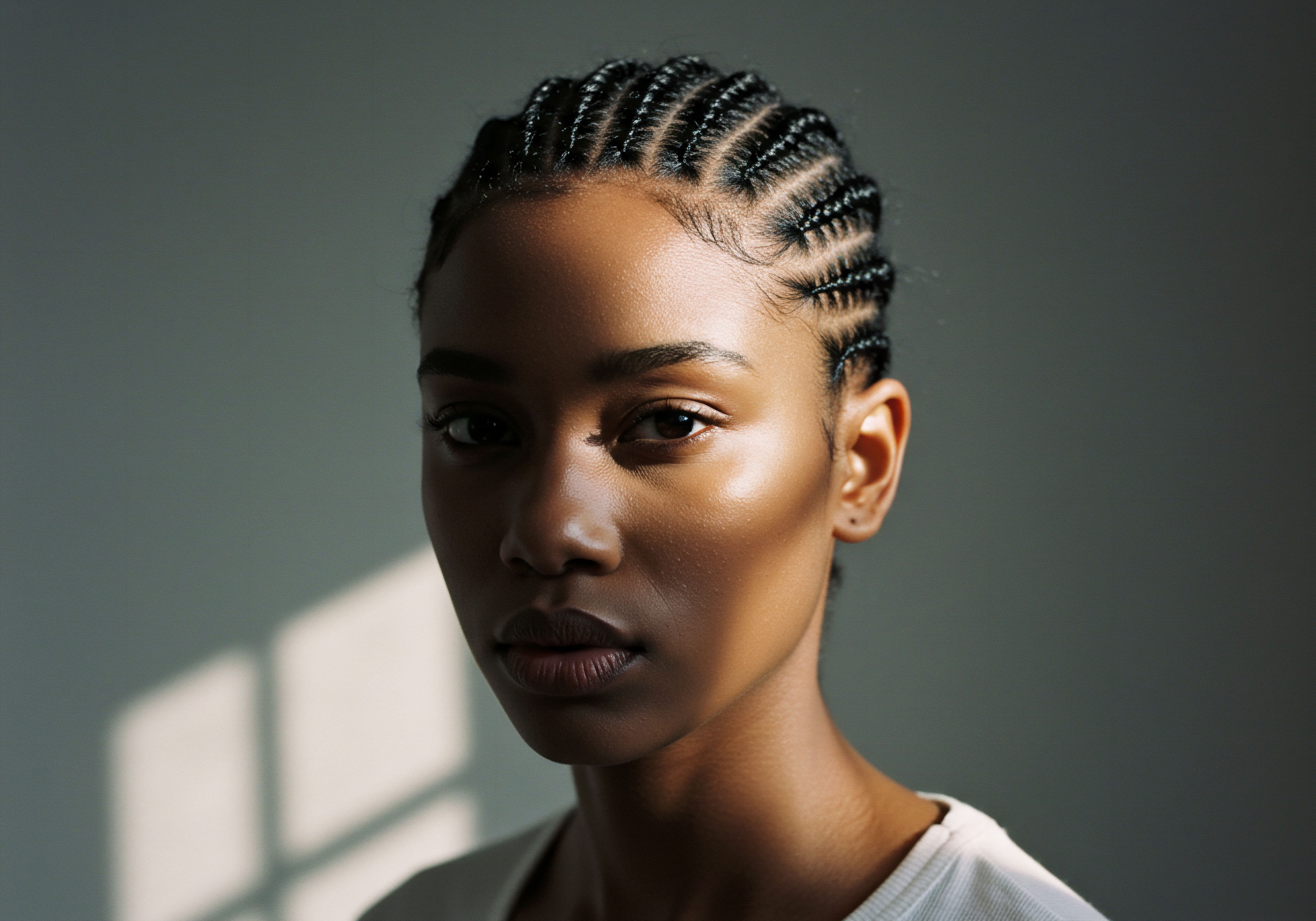
Advanced Insights into Management and Future Directions
The advanced understanding of C. acnes compels us to reconsider traditional management strategies. A singular focus on antibacterial agents, while sometimes necessary, risks disrupting the beneficial populations of C.
acnes and other commensals, leading to unintended consequences such as increased susceptibility to other pathogens or the emergence of antibiotic-resistant strains. A more sophisticated approach aims for microbial rebalancing rather than eradication, promoting diversity and the dominance of beneficial phylotypes.
This sophisticated understanding opens avenues for personalized care. Diagnostic methods that can identify specific C. acnes phylotypes on an individual’s scalp could inform highly targeted interventions. Furthermore, the development of microbiome-friendly products, those that support the scalp’s natural defenses and foster a healthy microbial ecosystem, represents the frontier of advanced hair care.
These products might incorporate ingredients that gently regulate sebum, provide a conducive environment for beneficial bacteria, or offer soothing properties to mitigate inflammation. The continuous exploration of the scalp microbiome, particularly within diverse hair types, promises to unlock even more precise and effective strategies for maintaining long-term scalp health and promoting the vitality of textured hair.
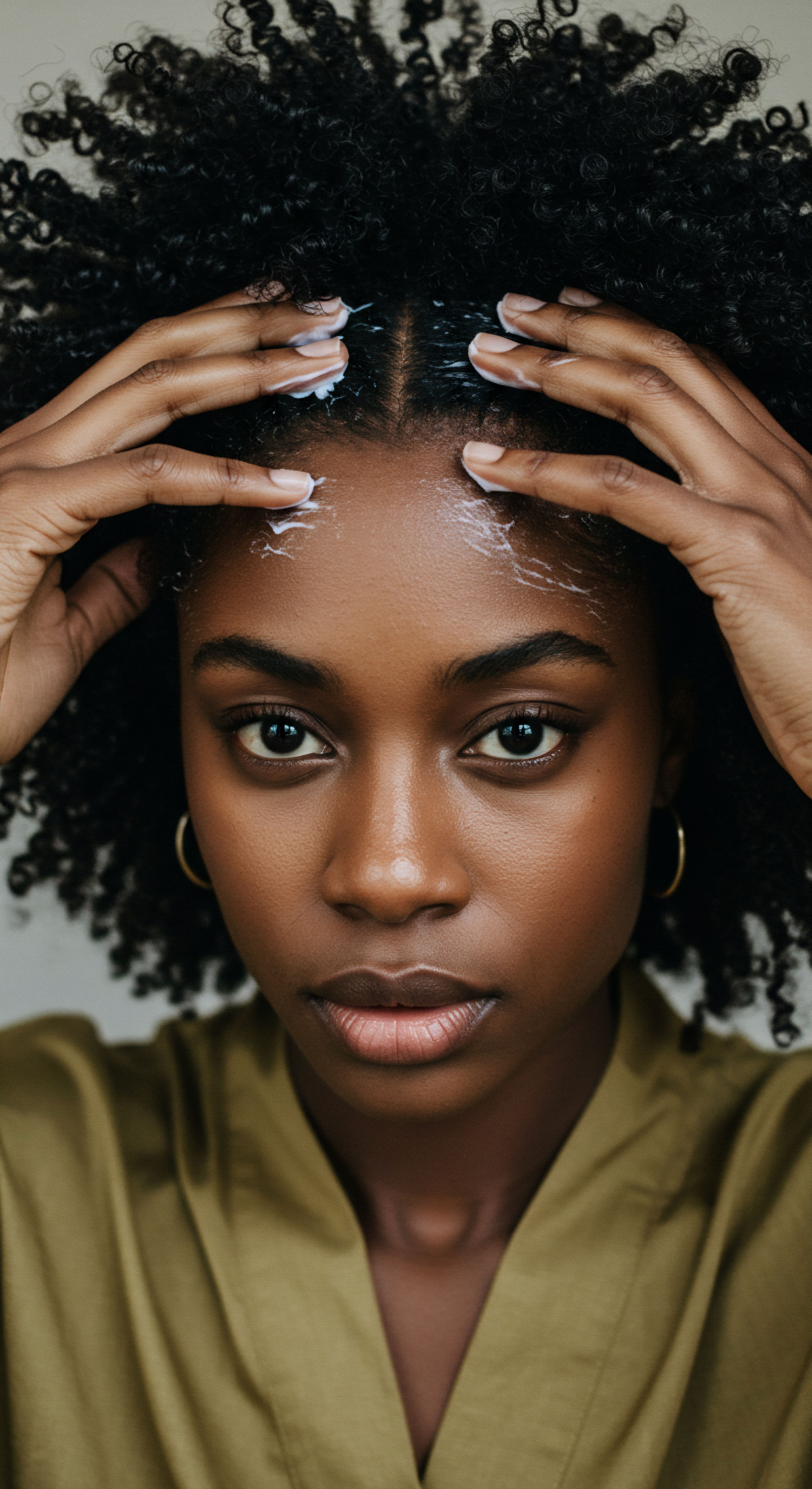
Reflection
As we gently close this exploration of Cutibacterium acnes, a deeper appreciation for the unseen wonders of our scalp emerges. The journey from a simple bacterial name to a nuanced understanding of its dance within our hair follicles, especially for those with textured hair, reveals a profound truth ❉ our hair stories are intricately connected to the living ecosystems that dwell upon our skin. This microscopic companion, often misunderstood, reminds us that true care extends beyond the visible strand, reaching into the very roots of our being.
In the whispers of scientific discovery and the echoes of ancestral wisdom, we find a shared message of balance and respect. The delicate equilibrium of our scalp’s microbial garden, influenced by our genetics, our environment, and the loving rituals we bestow upon our hair, holds a quiet power. To tend to this garden with informed hands and a compassionate heart is to honor the resilience and beauty of textured hair in all its forms. It is a testament to the ongoing dialogue between our bodies and the world around us, a continuous unfolding of understanding and self-acceptance.

References
- Decoding scalp health and microbiome dysbiosis in dandruff. (2024). bioRxiv.
- Cutibacterium acnes in Atopic Dermatitis ❉ Roles and Potential Therapeutic Applications. (2024). MedNexus.
- Myth Busters ❉ Are Protective Styles Good for your Hair Health? (2024). Cécred.
- A Review of the Role of C. Acnes and its Biofilm in Dandruff Pathogenesis. (2025). JDDonline.
- the scalp microbiome. Plus top tips. (2022). OBLOOM – Truu by Nature.
- Protective hairstyle. (n.d.). Wikipedia.
- Sebum. (n.d.). DermNet.
- Unraveling the Connection Between the Skin Microbiome and Central Centrifugal Cicatricial Alopecia. (2025). ReachMD.
- Protective Styling For Afro-Textured Hair. (2024). Fulham Scalp And Hair Clinic.
- Sebaceous-immunobiology is orchestrated by sebum lipids. (n.d.).
- Are Protective Hairstyles Really Protective? (2023). Bloom Hair Atelier.
- Exploring the Pros and Cons of Protective Styling. (2023). Harabi Beauty.
- Cutibacterium acnes in Atopic Dermatitis ❉ Roles and Potential Therapeutic Applications. (2024). International Journal of Dermatology and Venereology – MedNexus.
- Hair Loss ❉ Is the Scalp Microbiome to Blame? (2023). Typology.
- More than skin-deep. (2020). ASBMB.
- Study Finds Skin Microbiome Differences in Women With CCCA. (2025). Medscape.
- From Dysbiosis to Healthy Skin ❉ Major Contributions of Cutibacterium acnes to Skin Homeostasis. (2021). PMC – PubMed Central.
- Cutibacterium acnes Dominates the Post-Laser Skin Microbiome. (2025). Dermatology Times.
- The scalp microbiota in hair loss. (2023). Typology.
- Scalp Microbiome Explained ❉ What’s Living on Your Scalp and Why It Matters. (2025).
- Assessment of Cutibacterium acnes ❉ Acne Biofilm, Comedones, and Future Treatments for Acne. (2024). The Open Dermatology Journal.
- Cutibacterium acnes (formerly Proprionibacterium acnes) and Shoulder Surgery. (n.d.). PMC.
- Cutibacterium acnes Dysbiosis ❉ Alternative Therapeutics for Clinical Application. (2023). MDPI.
- A Pilot Study Characterization of the Scalp Microbiome in Central Centrifugal Cicatricial Alopecia Shows Shift in Corynebacterium. (n.d.). PubMed.
- Analysis of lipid composition of isolated human sebaceous gland homogenates after incubation with cutaneous bacteria. Thin-layer chromatography. (n.d.). PubMed.
- Recent advances in understanding inflammatory acne ❉ Deciphering the relationship between Cutibacterium acnes and Th17 inflammatory pathway. (n.d.). PubMed.
- Scalp Microbiome and Central Centrifugal Cicatricial Alopecia. (2025). EMJ.
- Hair microbiota – models and in vitro assays. (n.d.). QIMA Life Sciences.
- What is the scalp microbiome and why is it important for our health? (2022). The Secret Life Of Skin.
- The Role of the Skin Microbiome in Acne ❉ Challenges and Future Therapeutic Opportunities. (n.d.). MDPI.
- The correlations of C. acnes or S. epidermidis to human scalp. (n.d.). ResearchGate.
- Genomics of Invasive Cutibacterium acnes Isolates from Deep-Seated Infections. (2023). Microbiology Spectrum – ASM Journals.
- Potential Role of the Microbiome in Acne ❉ A Comprehensive Review. (n.d.). MDPI.
- C. acnes phylotype I express significantly more roxP than other. (n.d.). ResearchGate.
- Cutibacterium acnes. (n.d.). Wikipedia.
- Association Between Inflammatory Acne and Cutibacterium Acnes. (2023).
- Is Propionibacterium Acnes Associated with Hair Casts and Alopecia? (n.d.). PMC.
- Could acne bacteria actually help skin barrier function? (2023). Medical News Today.
- Comparison of Bacterial Lipase Activity in the Presence of Eye Lid Cleansers. (n.d.). IOVS.
- DISCOVER MICROBIOME-GENTLE SCALP & HAIR CARE. (2024). Hair by Sam McKnight.
- The Gut and Skin Microbiome in Alopecia ❉ Associations and Interventions. (n.d.). JCAD – The Journal of Clinical and Aesthetic Dermatology.
- Restore hair and scalp equilibrium for holistic beauty! (2023). NYSCC.
- New Topicals to Support a Healthy Scalp While Preserving the Microbiome ❉ A Report of Clinical and in Vitro Studies. (n.d.).
- Facultatively Anaerobic Staphylococci Enable Anaerobic Cutibacterium Species to Grow and Form Biofilms Under Aerobic Conditions. (n.d.). MDPI.
- Propionibacterium acnes ❉ from Commensal to Opportunistic Biofilm-Associated Implant Pathogen. (n.d.). PMC.
- Cutibacterium acnes in the human skin microbiome. (a) Relative. (n.d.). ResearchGate.
- OS-01 HAIR ❉ Clinically Validated to Support Your Scalp’s Microbiome. (2025). OneSkin.